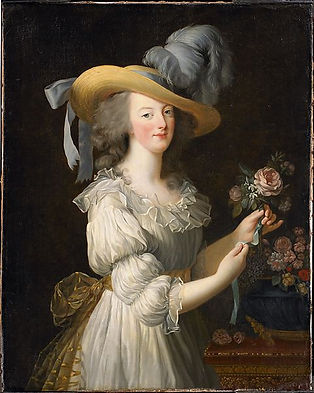High-waisted dress: Palingenesis of Fashion that Breaks the Chains

Dresses with a high waistline will never go out of style. The beauty of the pleats of the long skirt swaying with the pace, as well as the slender of the lower body created by the high waistline, are popular in any period that values natural demeanor.
In general, the high waist trend has showed up four times in the western fashion revolution, particularly during the ancient Greek-Roman period, the end of the 15th-century Gothic era to the Italian Renaissance, Neoclassical period and imperial period from the end of the 18th century to the beginning of the 19th century.
Ancient Greek and Ancient Roman Period

.jpeg)
Despite the fact that ancient Greece and Rome are over 2,000 years from today, their clothing has a natural advantage that can be explored: the statues. Statues include many clues regarding the lives of ancient Greek women, the most evident of which is their dresses.


The sculptures of ancient Rome followed the methods of ancient Greece, but because the objects of their depictions included not only goddesses, but also many aristocratic women at that time, the style was more serious and solemn. Although their clothes also have many pleats, they reflect the dress style of secular women more realistically than Greek sculptures, from which you can also see the ubiquitous high waistline design.
Gothic era to the Italian Renaissance
With the collapse of Western Rome, Roman fashion was gradually replaced by the aesthetics of emerging nations in Western Europe, while in Eastern Rome, due to the absorption of a large number of Asian cultures, the original Roman style soon ceased to exist, and the high waistline was abandoned. However, In the last hundred years of the Middle Ages, at the end of the Gothic era, the design of high-waisted clothing, Houppelande suddenly swept the whole of Western Europe in just a few years, and all the aristocrats scrambled to wear this extremely wide, heavy and gorgeous clothing.

Neoclassical period
From the seventeenth to the eighteenth centuries, from Baroque to Rococo, the tight and low-waisted skirt was popular for another 250 years, but in the 1790s it was almost abruptly replaced by the style known as the "Neoclassical high waist".The flamboyant but restrained Rococo crinoline dressing, which I mentioned in my last blog, still prevailed at the French court in the late eighteenth century.
Suffering from the confinement of the corset, someone decided to make a difference and inspired a style revolution. She is Marie Antoinette, the last queen of France before the French Revolution. Marie Antoinette's fashions are still being followed by prominent fashion designers today, from her over-the-top pastel gowns festooned with ribbons and bows to her simple muslin garments that drew both admiration and derision.
In an exquisite royal portrait of the French queen on the left, painted by Vigee Le Brun, Marie Antoinette is depicted wearing
a simple, unstructured dress made of white muslin, tied at the waist with a ribbon sash. This dress, the chemise á la reine, (robe en gaulle), was created for Marie Antoinette by Rose Bertin in 1781.
This image may appear benign to modern eyes, but it was an insult to pre-revolutionary France in the 18th century.
This considerable transformation caused a great number of censures and disparages at that time. She was criticized for dressing like a milkmaid, and this “underwear as outwear” style revolution was considered to be indecent and profligate, which made people feel offended and irritated.

Although Queen Marie's white cotton gown did not last either, it was a significant fashion milestone that serve as a basis for the neo-classical style that followed, as well as a crucial turning point for women to break traditional and archaic ideologies.
Imperialism

The bourgeoisie in power strongly promoted the heroism and rational thinking of the classical era and opposed the ornamentation of Rococo in aesthetics, preferring the elegant and beautiful Greco-Roman style. This was reflected in the rise of neoclassical styles.
Napoleon established his empire in 1804, and his fanaticism of ancient Roman culture brought this retro wave to the apex. Meanwhile, because Jane Austen's novels include the most detailed descriptions of this period, literary enthusiasts refer to it as the "Austen style”.

(Pride and Prejudice, 2005)
The emergence of high-waisted clothing, to some extent, showed a rebellion against the constraint of bodies. Mind advancement also contributed a momentous role in the history of fashion evolution, as well as the improvement of society. Compared to men, It is rather difficult for women to revolt against established and ineradicable traditions and social stereotypes, which means that they have to endure great pressure and public opinions. Therefore, pioneers in any field deserve respect.
Always be conscious and critical of your surrounding world. We need to be someone who can break the mold. That's how our society continuously moving forward.
#Fashion #history #high-waisted dressing #MarieAntoinette #Houppelande #Freedom #Neoclassic #women
Reference:
https://www.hisour.com/western-fashion-of-women-in-1800-1815-32576/
